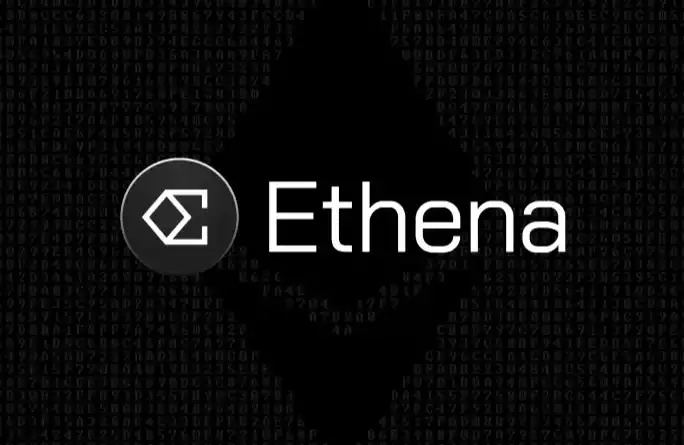There are over 1 million validators in Ethereum. How does “Rainbow Pledge” solve the problem of centralization of pledges?
Original title: "The number of Ethereum validators exceeds 1 million. How does "Rainbow Pledge" alleviate the centralization problem of pledges? 》
Original source: Ebunker Chinese
The number of validators has soared, and the centralization of staking has once again attracted attention
Recently, the number of active validators on the Ethereum network has exceeded 1 million. Since validators are the core of the Ethereum PoS mechanism, their development is crucial. The huge increase in the number of Ethereum validators, especially after the Shapella upgrade, has caused excitement and attention in the market. At the same time, there are also concerns about the technical and centralization challenges that may arise from a rapidly expanding number of validators.

According to Dune data, 3 On March 28, Ethereum reached an important milestone of 1 million in the number of validators. Discussion points in the community revolve around the growth of the validator set, especially after the Shapella upgrade made Ethereum staking flexible to withdraw, which is key to Ethereum's development towards a more scalable and energy-efficient network. However, as the number of validators increases, each validator must independently download the latest data and verify state changes within a constrained time frame. This means they require more computing power to implement larger chunks of data.
According to statistics, there are currently at least 850,000 validators who are users who entrust ETH to centralized platforms for pledge, because most ETH holders do not Have more than 32 ETH, or are unable to handle complex staking operations on their own. This raises another concern – the potential risk of increasing centralization. This could happen if the growing bandwidth of the network allows validators with significant computing resources to continue to participate in validation efficiently. This would put institutional-owned data centers over individual self-hosted nodes. Furthermore, it would push the Ethereum network towards centralization, which is contradictory to its basic ethos.
It is important to note that validators do not represent a single entity. To run the validator, the entity must have 32 ETH. However, multiple validators can be run on a single server. Ethereum’s transition to a PoS verification mechanism is critical to improve efficiency, but how to balance the growth of the number of validators with the network’s fundamental principles of decentralization and availability remains a crucial challenge.
"Anti-correlated incentives" proposal

While Vitalik Buterin recognizes the advantages that large validators provide to the Ethereum network, he still tries to balance large validators with the requirements of a decentralized and resilient network. On March 27, he proposed the innovative plan of "anti-correlated incentives" to address the problem of centralization among validators, increase the penalties for failures of large validators, and enhance the decentralization and fairness of Ethereum's staking mechanism.
Correlated failures in the Ethereum network may be due to the control of multiple validators from a single location, which undermines the decentralized nature of the system. To address this problem, the "anti-correlated incentives" plan will punish the correlated failures of validators, thereby incentivizing them to expand the scope of their validator activities.
Vitalik Buterin believes that if multiple validators controlled by the same entity fail together, they will be fined higher than if a single validator fails, because any mistakes made by a large validator will be replicated across all identities under its control. For example, validators in the same cluster (such as Staking Pool) are more likely to experience correlated failures, perhaps due to shared infrastructure.
The proposal proposes to penalize validators that deviate from the average failure rate. If many validators fail in a given slot, the penalty for each failure will be higher.
Simulations show that this approach can reduce the advantage of large Ethereum staking platforms, as large entities are more likely to cause spikes in failure rates due to correlated failures. Potential benefits of the proposal include incentivizing decentralization by establishing separate infrastructure for each validator and making solo staking more economically competitive relative to staking pools.
In addition to this, Vitalik Buterin also proposed other options, such as different penalty schemes to minimize the advantage of large validators and examine the impact on geographical and customer decentralization.
While Ethereum has penalty mechanisms such as slashing to deal with serious violations, these mechanisms are usually used to deal with extremely malicious or serious behavior. The proposal incorporates penalties into regular network operations and emphasizes promoting real diversity among validators. The purpose of this strategy is to ensure that efforts to increase decentralization promote substantive changes rather than just superficial compliance.
Rainbow staking
At the 2024 Eth Taipei Conference, Vitalik Buterin also analyzed the idea of "Rainbow staking", an approach that encourages the diversity of service providers as a means to solve the centralization problems faced by Ethereum. He emphasized the focus on staking platforms with large amounts of Ethereum assets, especially Lido Finance (which has two-thirds of the liquidity staked Ethereum, accounting for 7% of the total circulation of ETH).
Currently, there are not enough solo stakers in the Ethereum network, mainly due to technical challenges (such as running your own node) and financial limitations (owning less than 32 ETH). Therefore, many people who want to stake ETH can only earn returns through liquid staking solutions.
Rainbow staking can be divided into heavy staking and light staking. In this particular case, heavy staking is slashable and has a signature in each slot. In contrast, light staking is not slashable and it is signed through a lottery system. Now trying to clearly separate the two, and possibly requiring both to sign on a block to make the block finalized, is trying to add the security of these two methods together.
Todd, partner of Ebunker, a non-custodial staking service provider for Ethereum, said that in the past, small stakers were basically "missing roles" in the verification work of the ETH network. The core purpose of rainbow staking is to allow small ETH stakers to participate in network verification in a very lightweight way. Then, with the increase in the number of participants, the centralized impact of the head institutions and protocols holding a large amount of staking ETH can be partially offset.
The framework of Rainbow staking can cope with the emergence of dominant liquidity tokens (which can replace ETH as the main currency on the Ethereum network). It also aims to provide competitive participation by enhancing the economic value of solo stakers.
Vitalik Buterin pointed out that in the long run, more research and development is still needed before rainbow staking becomes a viable design for Ethereum. He believes that the biggest problem is not even technical, but philosophical.
Original link
Welcome to join the BlockBeats official community:
Telegram subscription group: https://t.me/theblockbeats
Telegram communication group: https://t.me/theblockbeatsApp
Twitter official account: https://twitter.com/BlockBeatsAsia
Welcome to join the official BlockBeats community:
Telegram Subscription Group: https://t.me/theblockbeats
Telegram Discussion Group: https://t.me/BlockBeats_App
Official Twitter Account: https://twitter.com/BlockBeatsAsia


 Forum
Forum Finance
Finance
 Specials
Specials
 On-chain Eco
On-chain Eco
 Entry
Entry
 Podcasts
Podcasts
 Activities
Activities
 OPRR
OPRR







